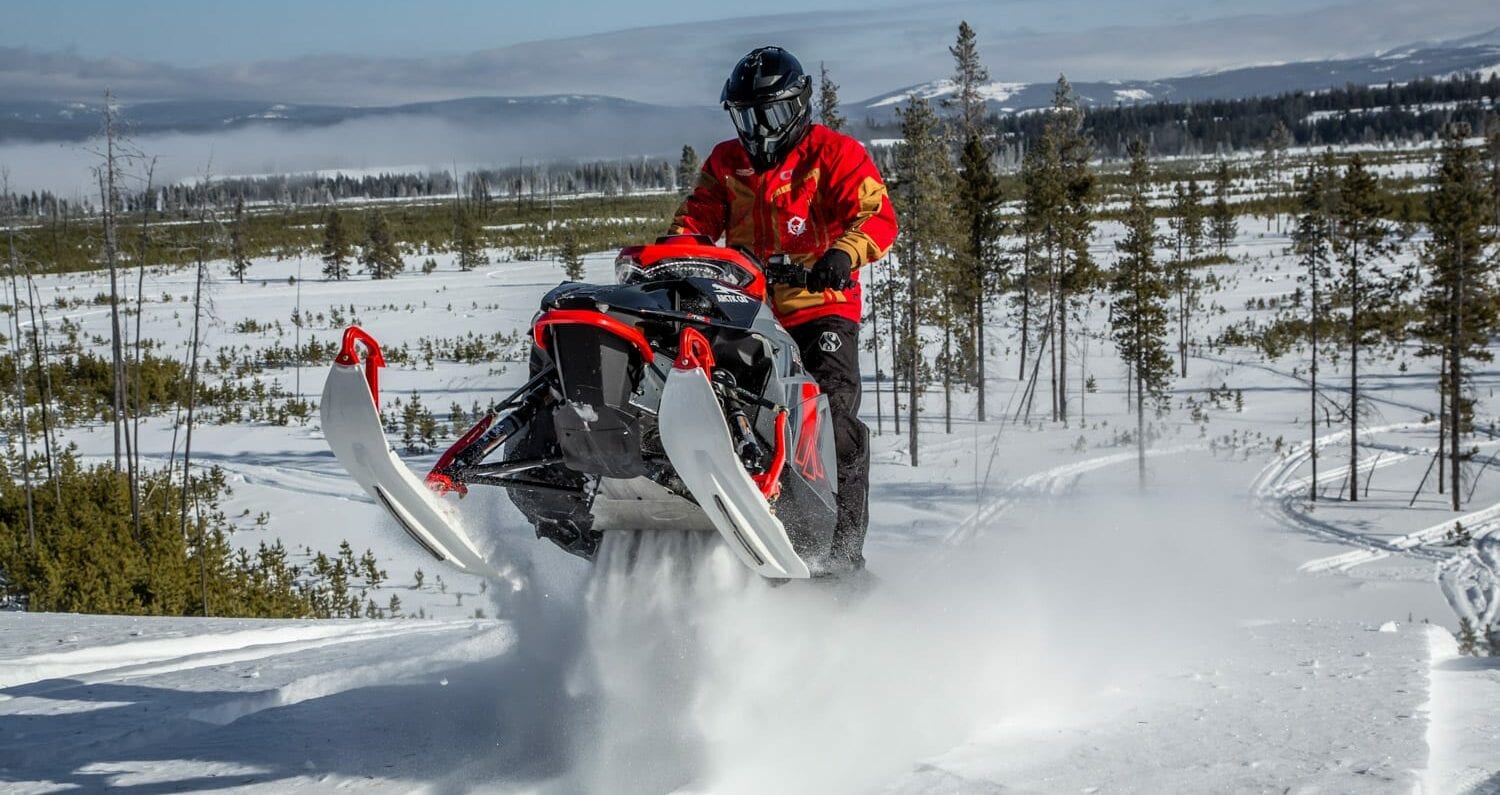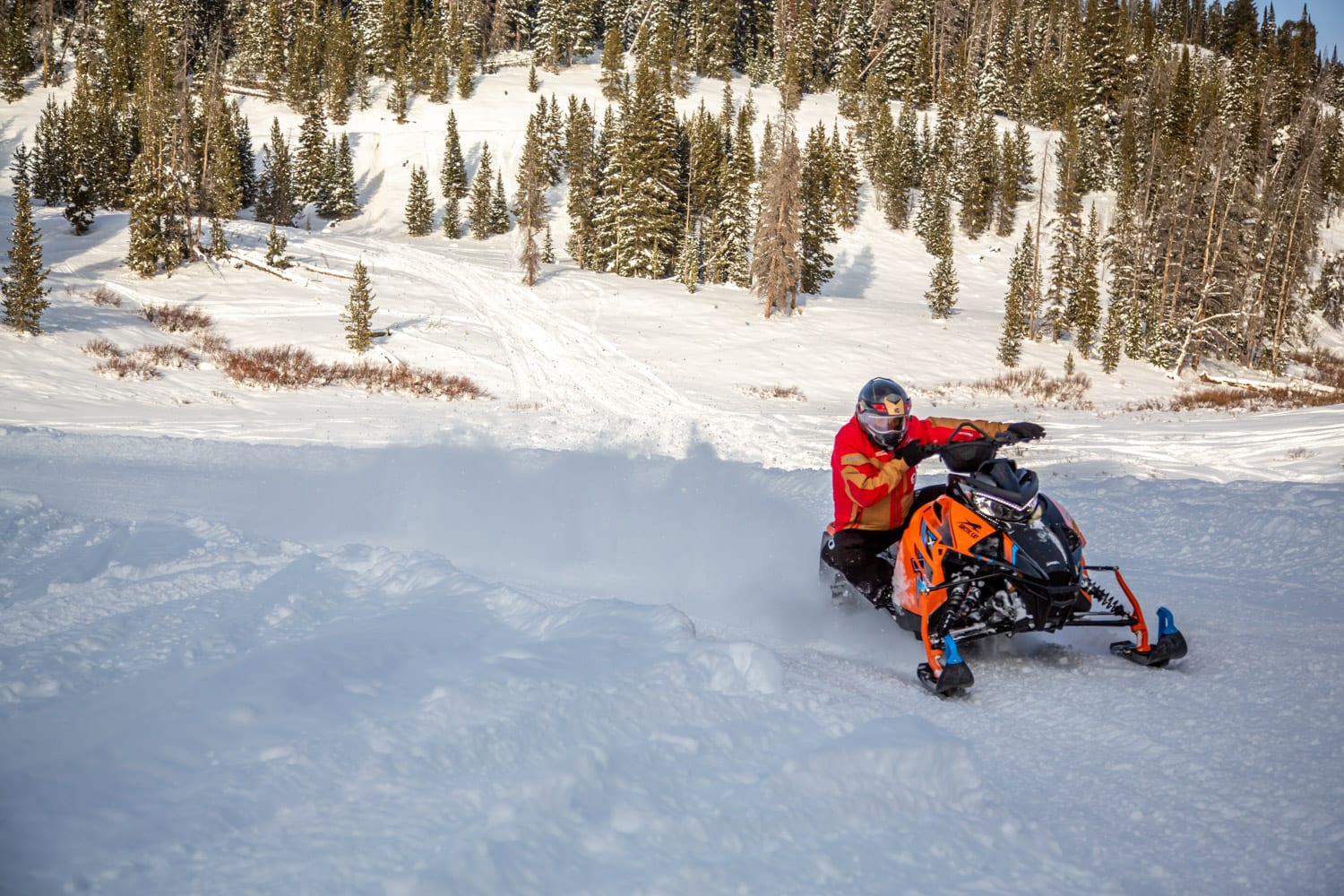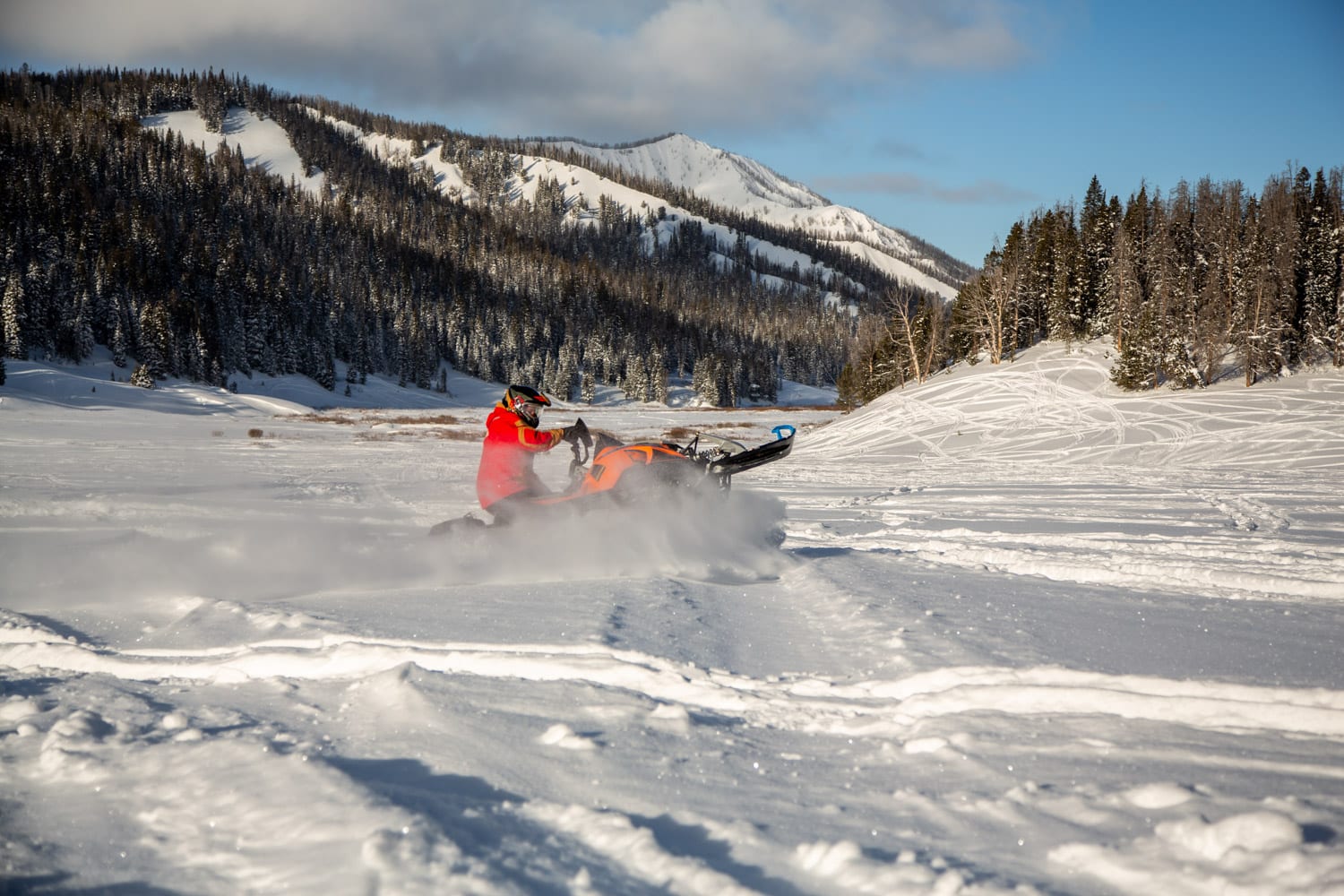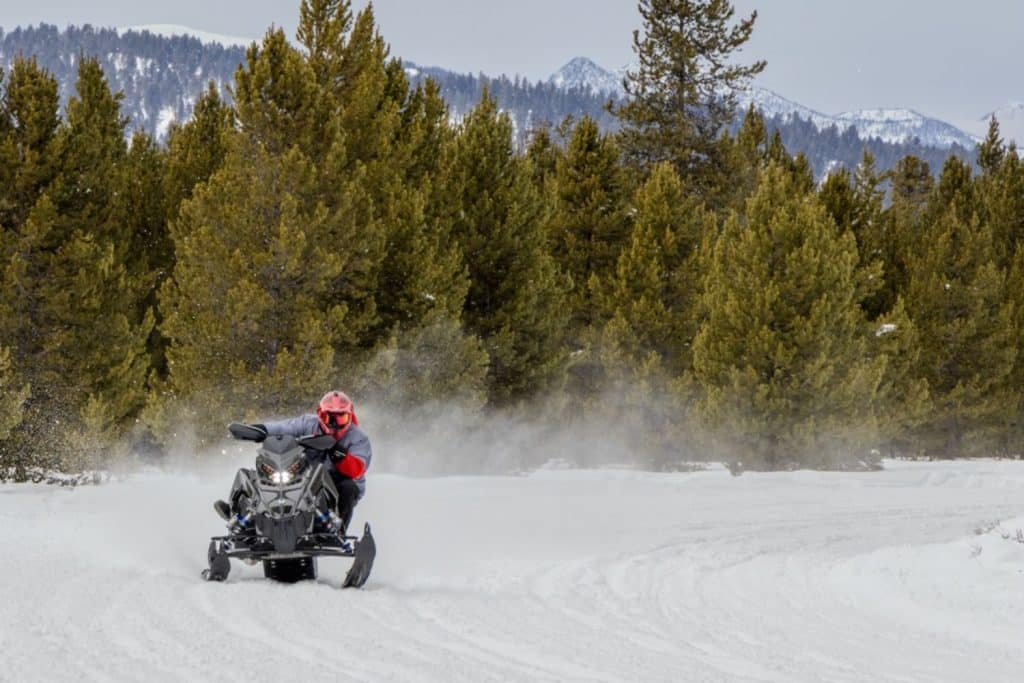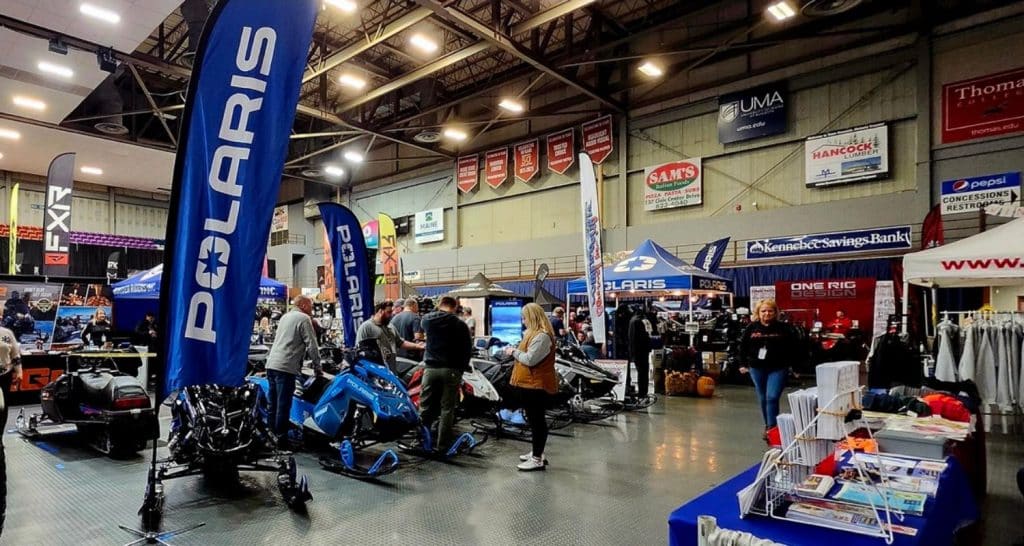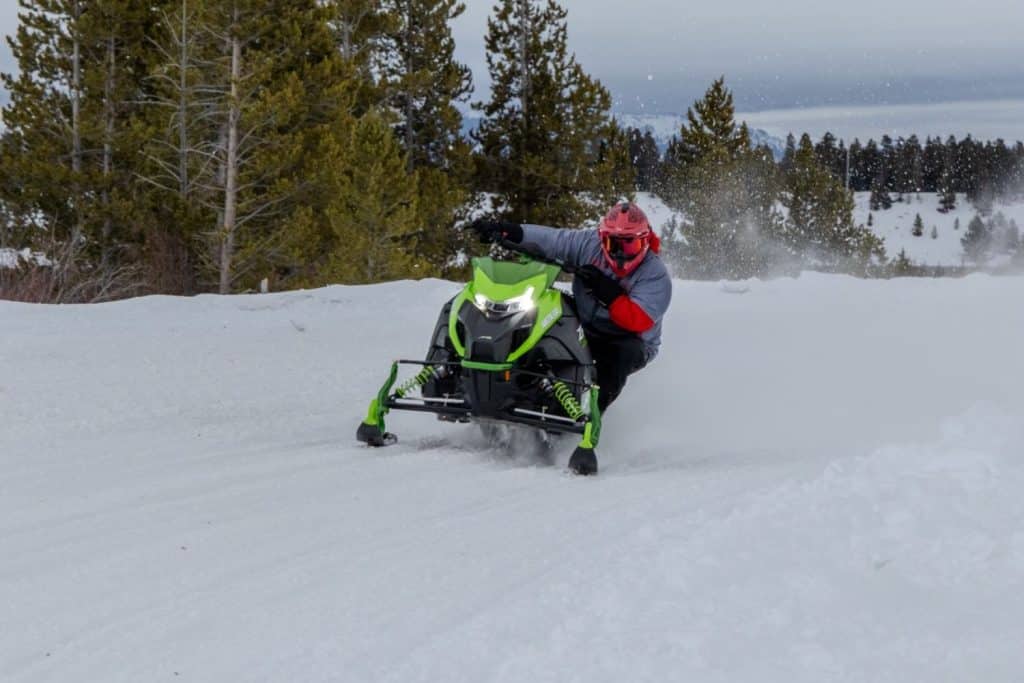Of course, 2021 will not go down in history for the American manufacturer. It seems obvious that the inventory reduction begun in 2020 will continue. This is certainly a good decision for the company, but can we really say the same for the dealers? They have to work hard to keep their customers with very few models to offer. For some of them, this strategy allows them to reduce their inventory from past years, but for others, this situation causes problems that, hopefully, are only temporary… The question on everyone’s lips is whether this silence from Arctic Cat is a sign that a huge new product is on the way. We all hope so. That being said, the 2021 Arctic Cat Snowmobile does include a few new features and improvements that will delight fans.
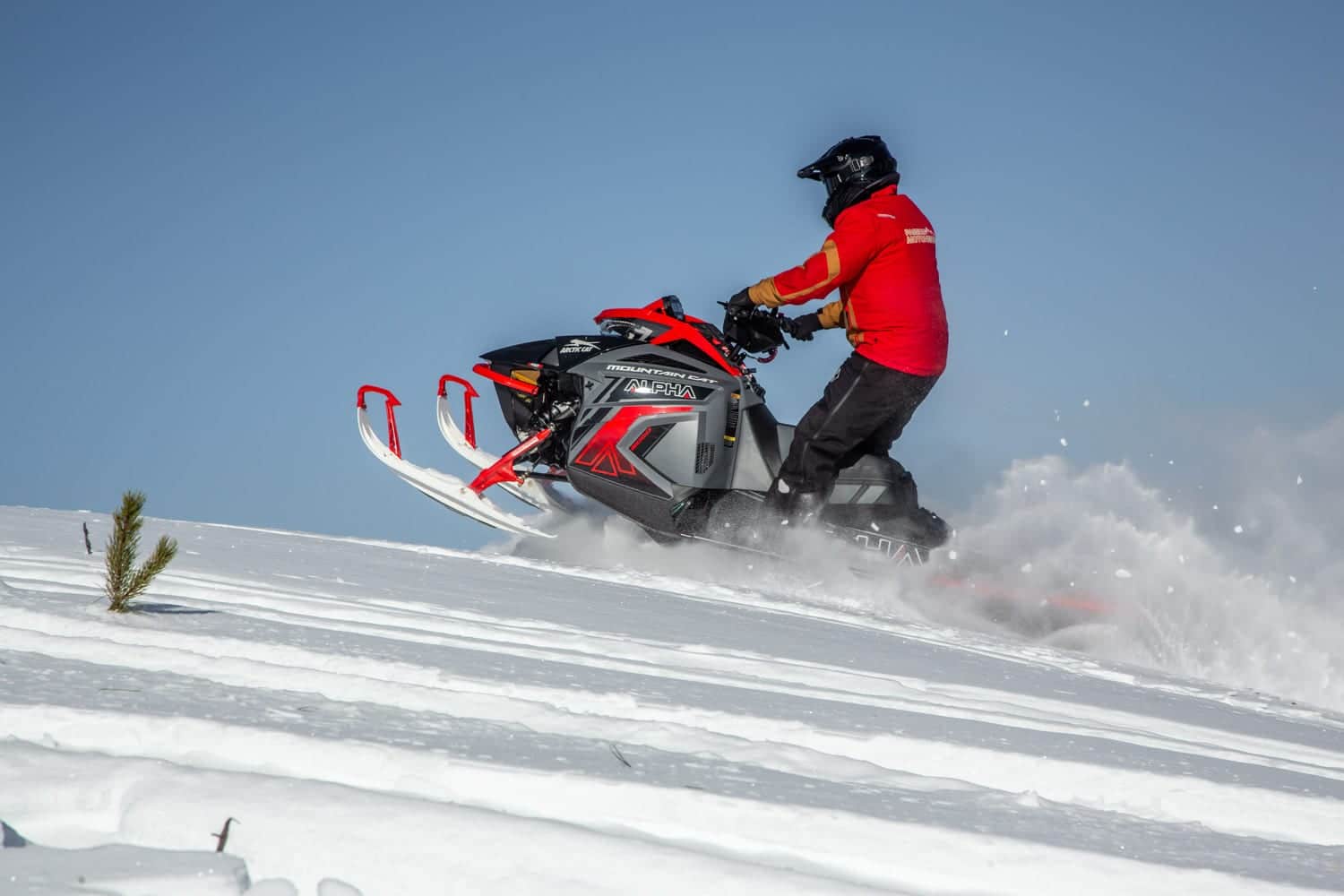
Alpha Suspension 146 inches
The arrival of the Alpha suspension in 2019 marked the industry with a vision that had never been explored in snowmobile history. The idea of using a centered monorail to facilitate the cambering of the sled with a flexing track raised a lot of questions: How will the track withstand the stresses that are totally different from what we knew before? How will the monorail resist to the impacts? And so on. After two years in production, the engineers and designers can say mission accomplished. This suspension has surpassed expectations in every way, the results in deep snow were unanimous and the reliability aspect, which was the biggest question mark, literally convinced the most skeptical. This suspension is not perfect, as none on the market is. Some find it more unpredictable on the mountainside, and of course for those who have to take the trail to get to the mountain, have to maneuver with very little stability. But when it comes to waltzing in the powder, it’s a real marvel, its design makes it much easier to camber and less effort to ride.
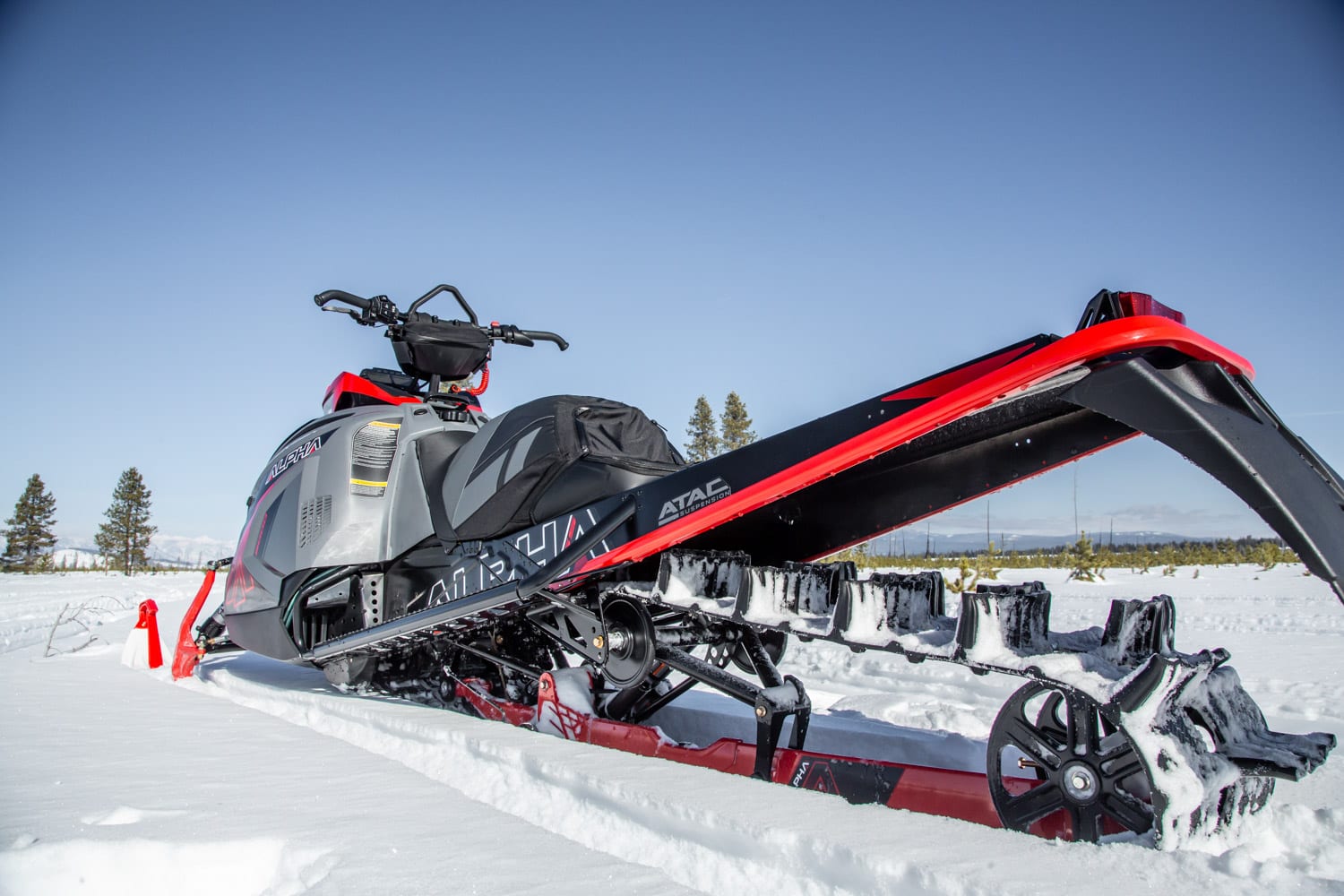
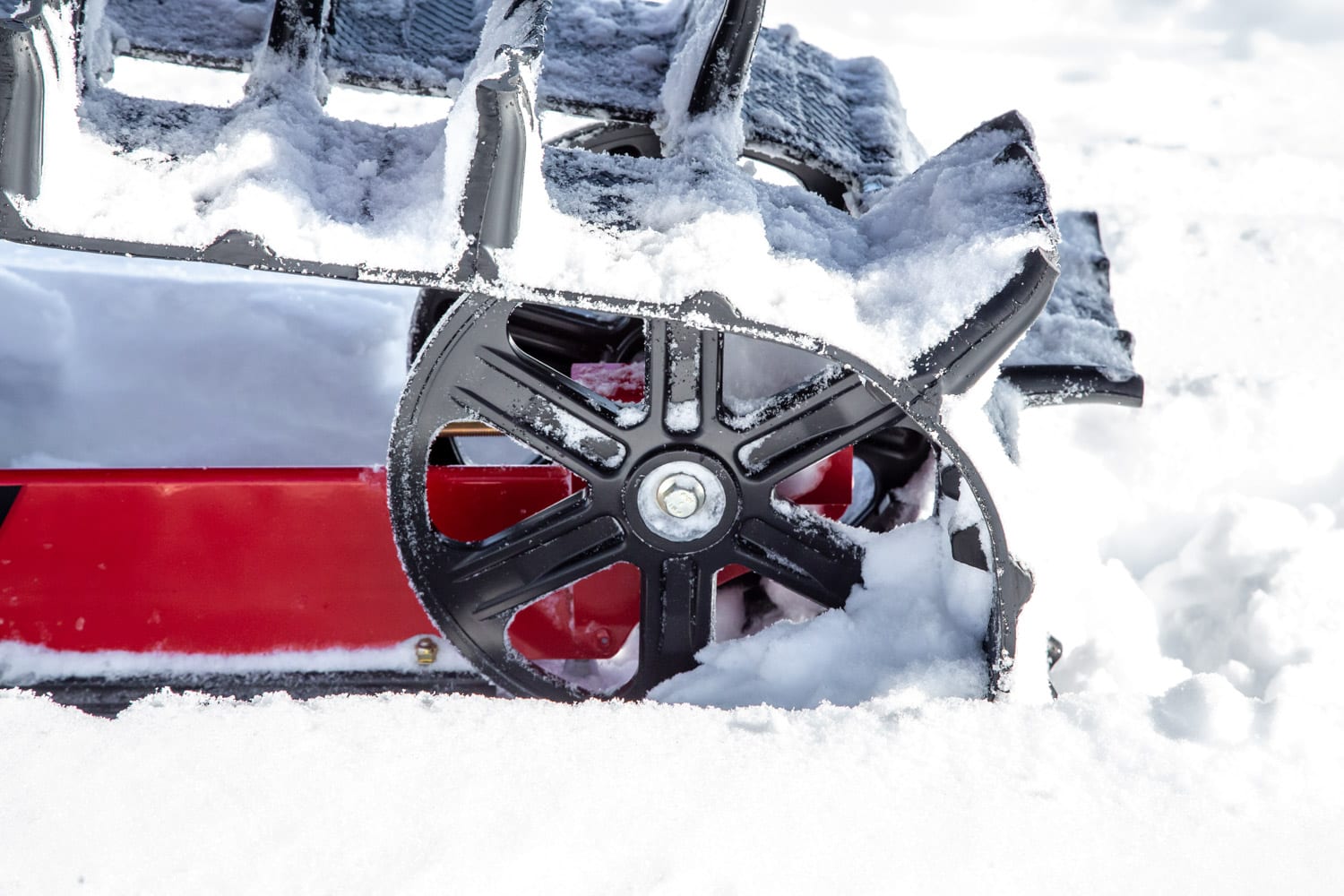
In 2021, engineers are pushing the envelope with a 146-inch Alpha suspension! The target market is really 70-30, 70 percent powder, 30 percent trail, providing better stability than the longer versions. The main difference with its 154 inch M counterparts is the length of the monorail between the rear wheels and the rear pivot arm attachment of the suspension. This reduction allows for the use of a 146 inch shorter track while maintaining exactly the same attachment points on the tunnel as all M versions. In fact, only the rear portion of the monorail changes with length. The spring and damper calibrations have also been revised to accommodate the shorter span than the mountain models. This new suspension is only available on the Riot X 8000 models.
Riot X 146
Arctic Cat is introducing a transformed Riot X in 2021. And this transformation fills a void that had been left for a few years by the American manufacturer. According to our tests, it would be very appropriate to call it a 70% mountain 30% trail. Up front, we find the Arctic Cat Arctic Mountain Suspension (AMS), whose spindle arms are tilted towards the rear, with the same slimmed-down style as the M versions, in order to continue the slimming process. The engineers opted for a wider spindle than the mountain models, adjustable from 39.5 to 41.5 inches. This combination offers more stability in turns, making it easier to tackle winding trails while still maintaining agility in powder. In the back, we find the new Alpha 146 described above.
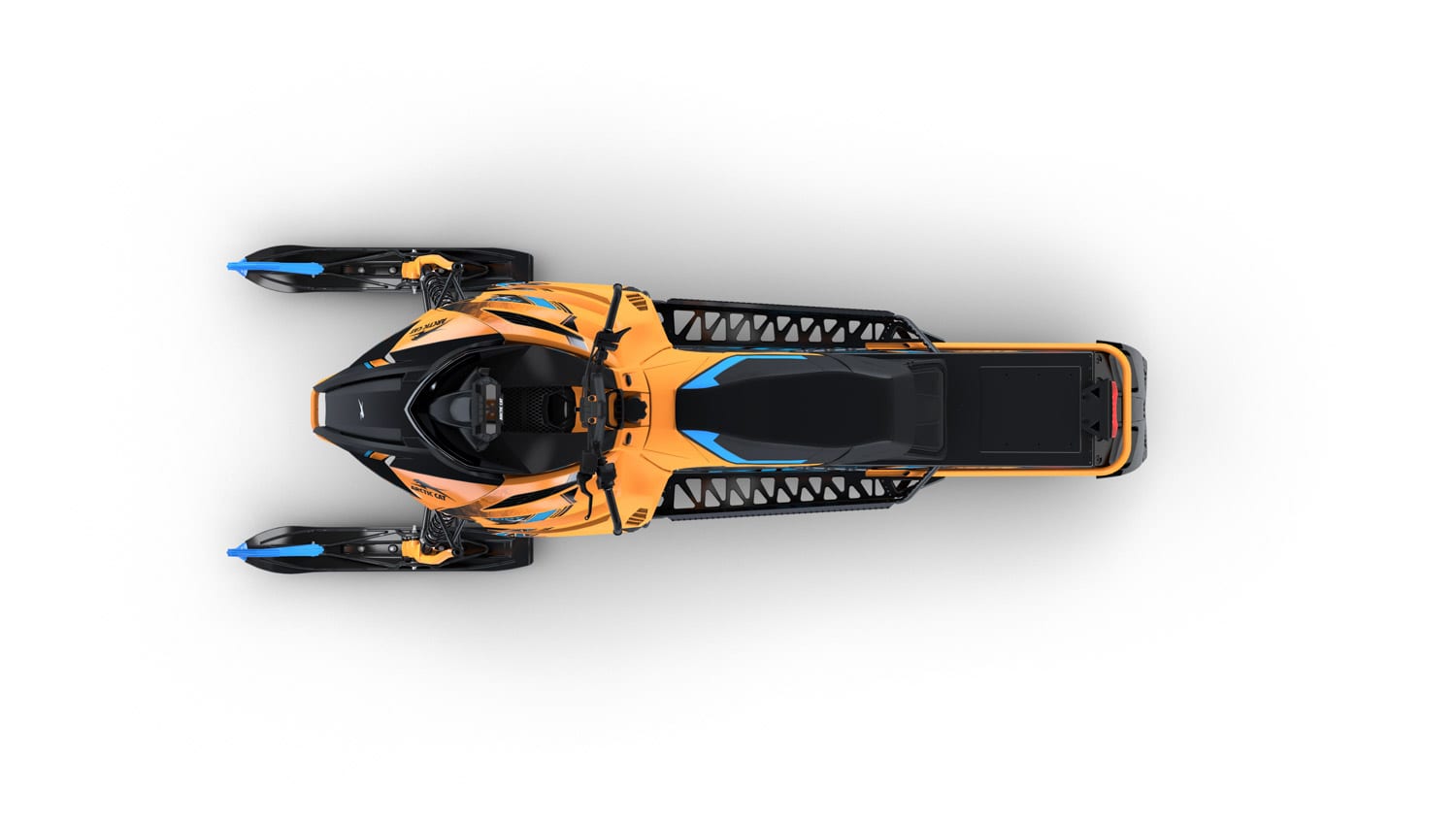
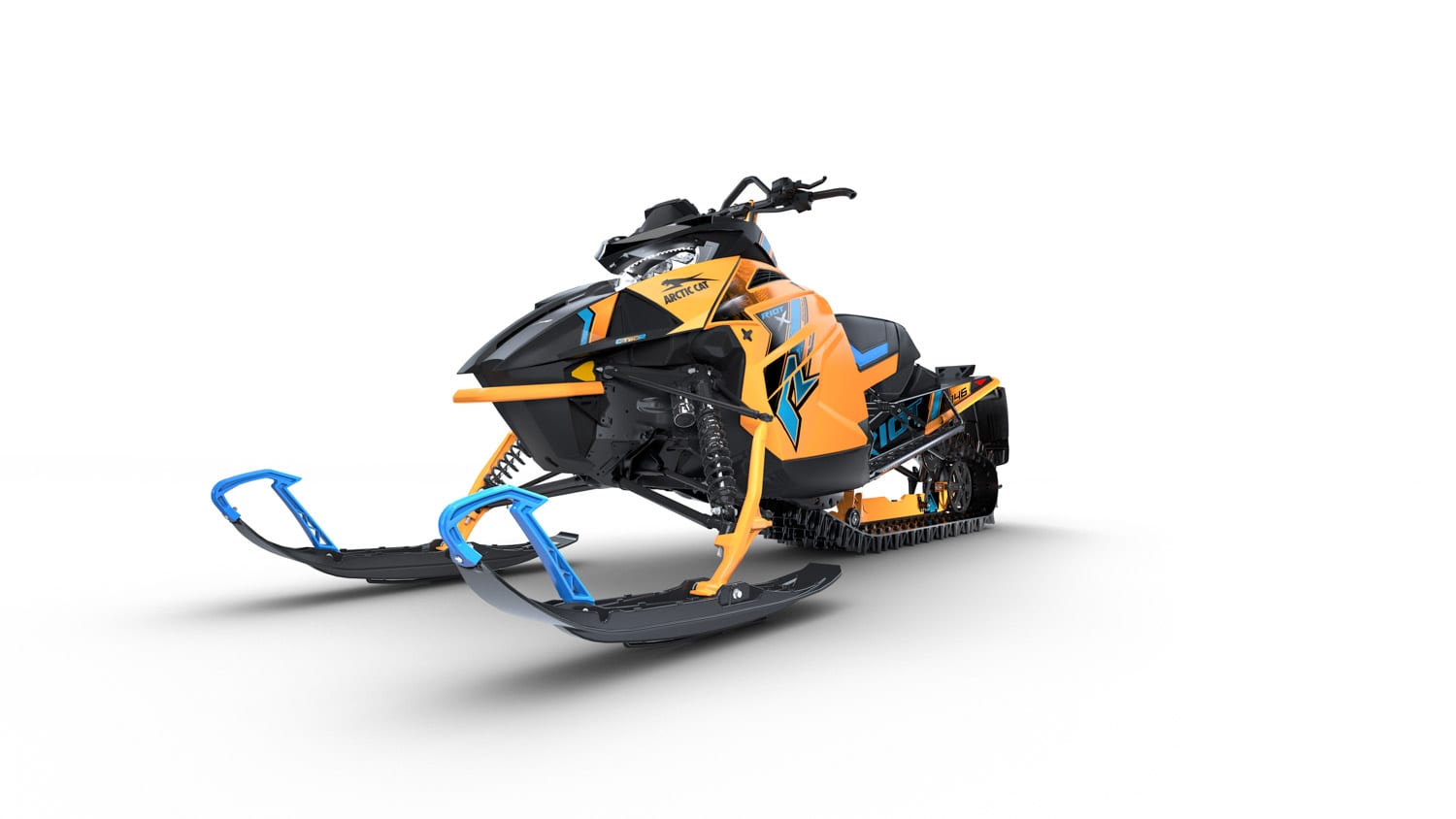
Chenille Power Claw
To go along with the Alpha suspension is an all-new 146-inch Power Claw track with 2.6-inch lugs. Like its longer counterparts, it has the same flexibility features required by the Alpha suspension, including the track cooling holes or windows located in the center of the track. These also help to cool the tracks.
New Riot handlebars!
The Riots 6000 and 8000 will be equipped with the same handlebars as the ZR versions in 2021. With the modifications made to their more mountain-oriented X sister, we wanted to give the 50/50 range better trail ergonomics!
Lightness obliges
For years, the notion of weight has been a factor put to the forefront by all manufacturers. Many times, we find parts developed by the racing department on production snowmobiles. This is the case of the new TCL plate that connects the two clutch pulleys. This plate, now made of carbon fiber, keeps the two pulleys perfectly aligned. This is a weight and reliability benefit for the ZR 6000 and 8000 models as well as the Riot 6000 and 8000.
Chain case: new cap
In order to avoid oil seepage from the chain case, engineers redesigned the refueling cap. The cap now has two sealing rings, commonly called O-rings, to prevent oil from seeping out.
R.I.P. storage rack
Arctic Cat has decided to remove the rear tunnel storage racks that were standard on the Riot 6000 and 8000 from production. Very few reasons were disclosed to us regarding this decision. Probably a question of production cost…
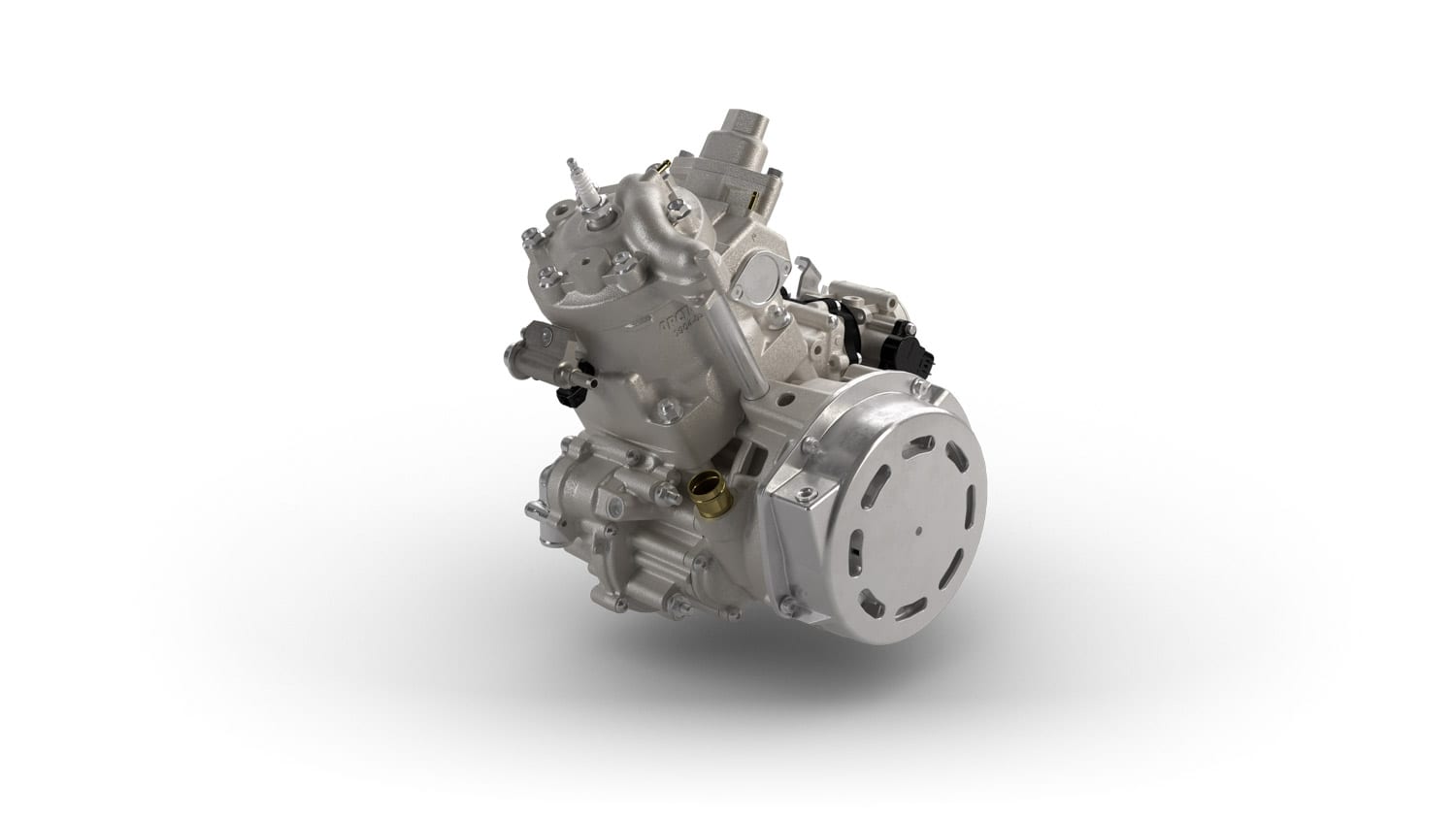
Blast!!
Arctic Cat is attacking the entry-level market with the Blast! The target market is really the teenager who’s just starting out in the sport, or the beginner who wants to get the hang of it before getting on a full-size snowmobile. And Arctic Cat is going all out, attacking three segments: trail, work and off-trail!
Blast motorization
Arctic Cat is getting bold! We’re introducing a brand new engine, a 400 CC two-stroke with 65 horsepower! This new engine is in fact a single-cylinder engine with electronic fuel injection and 85-millimeter stroke by 70-millimeter bore, exactly the same specifications as the 800 CC engine. There is an exhaust valve for more low and mid-range power and a sensor in the calibrated pipe to perfect the air/fuel mixture. Engineers added counterbalancers to the crankshaft to reduce vibration. Some may say it’s an 800 cut in half, but they may not be far off the mark…
Blast ZR
It was a must to keep the ZR acronym to identify the trail version of the newcomer! The Blast ZR features a 121-inch by 15-inch wide track with 10.7 inches of travel. Even though it is slightly smaller than a full-size model, it still has all the artillery of a full-size model: electric start, heated grips/thumb, electronic reverse and adjustable front and rear suspensions.
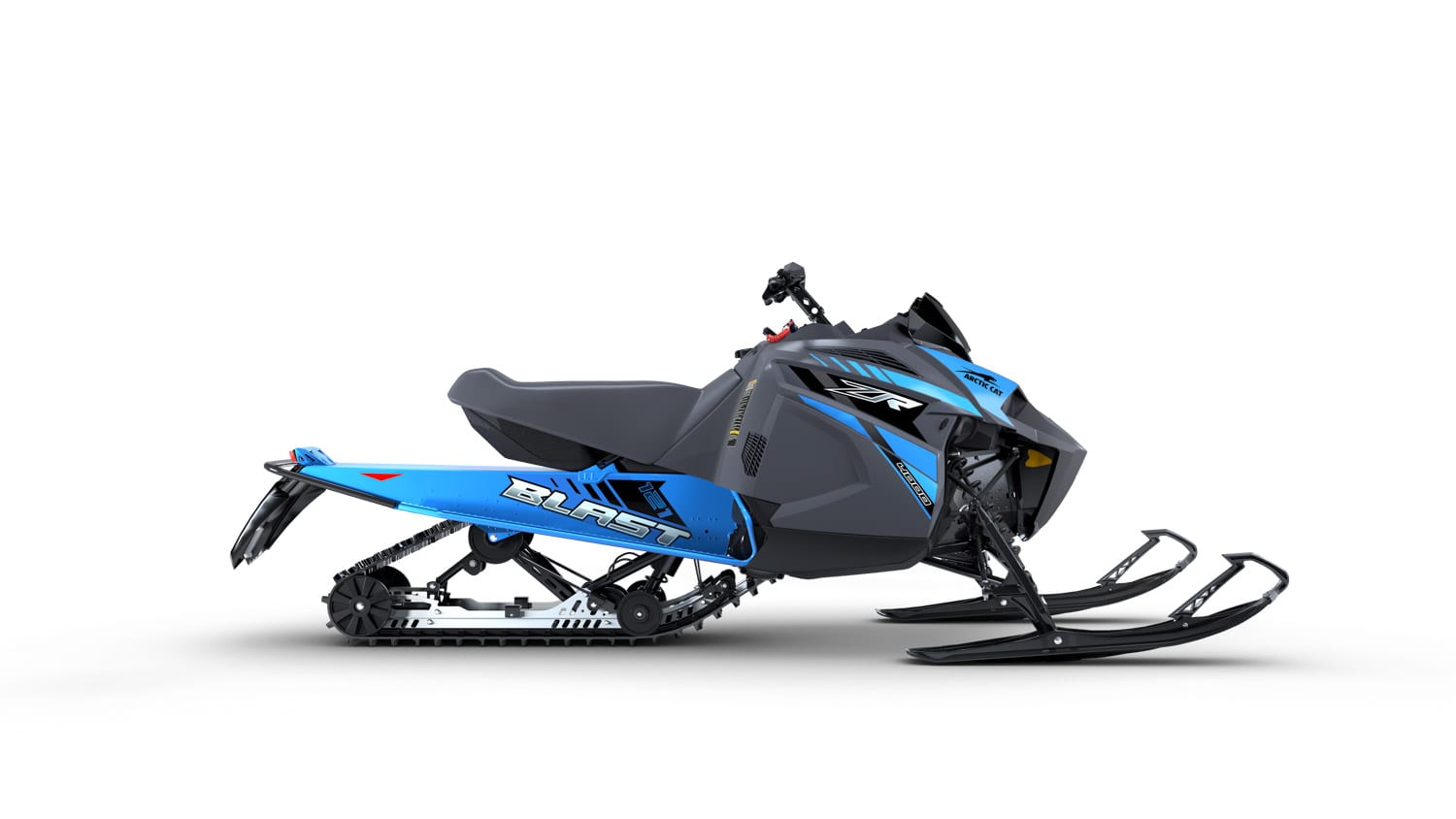
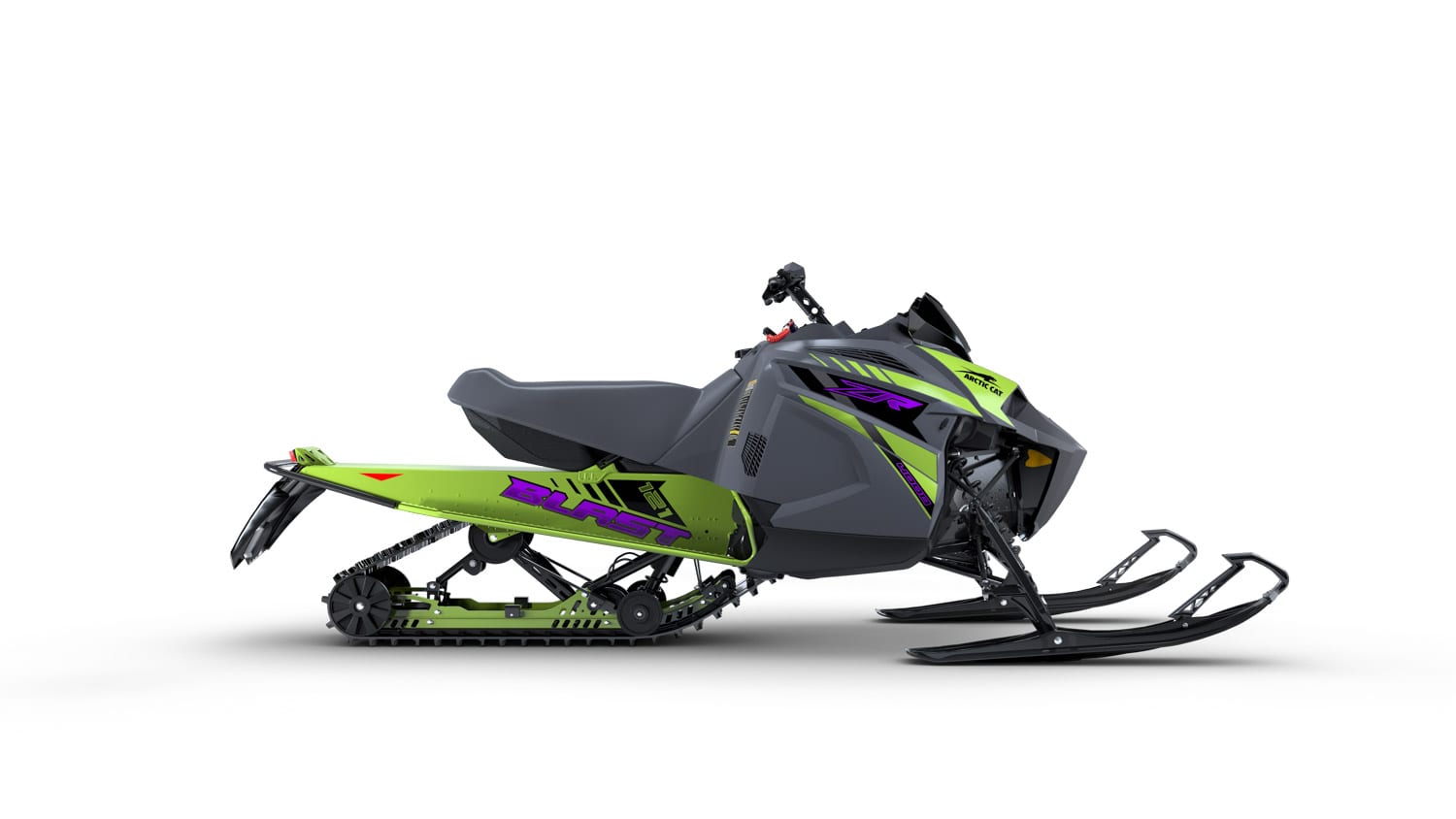
Its behavior on the trail is very acceptable, always keeping in mind that this is a smaller entry-level snowmobile. We were the first to get a prototype here in Quebec late last winter, which allowed us to see how it performed at sea level. Acceleration is good enough to experience the Quebec trails, and top speed is around 110 km/h, which is more than enough on our trails where the limit is 70 km/h. As we mentioned in our videos, the use of single sleds is very questionable on a snowmobile like this one, in hard conditions, the front end exerts a lot of sway, which makes the learner or young rider insecure. So, without a doubt, the addition of double rails or any other product that reduces sway should be considered.
Blast LT
This is the Blast that we think will find the most takers in Quebec. The LT, for Long Track, is Arctic Cat’s entry-level snowmobile in the work/trail category. It comes with a 146-inch track with 1.6-inch lugs and Extra-Action work suspension. Ideal for low-speed work, it offers great flotation with its long track, and excellent cargo space with rear support.
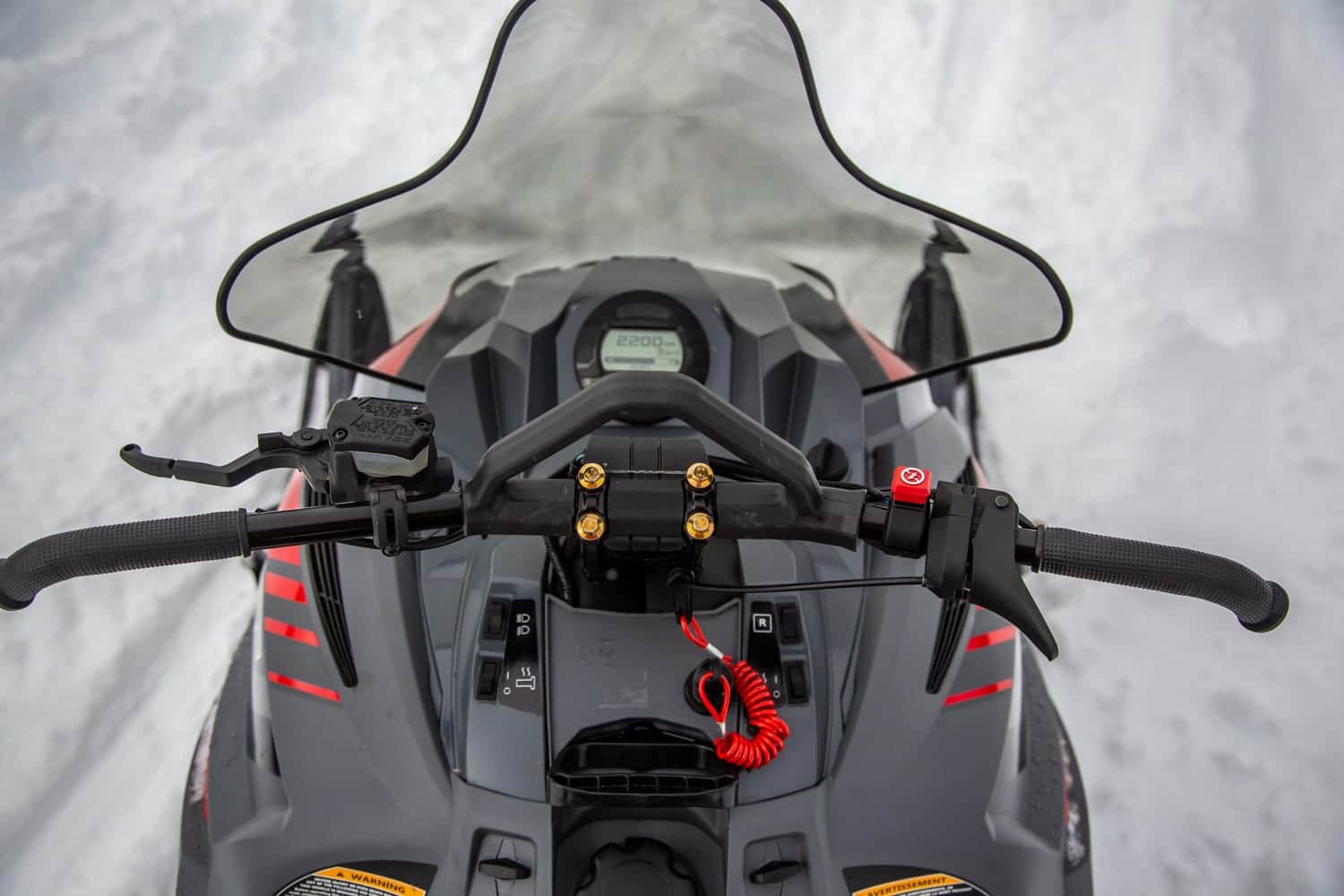
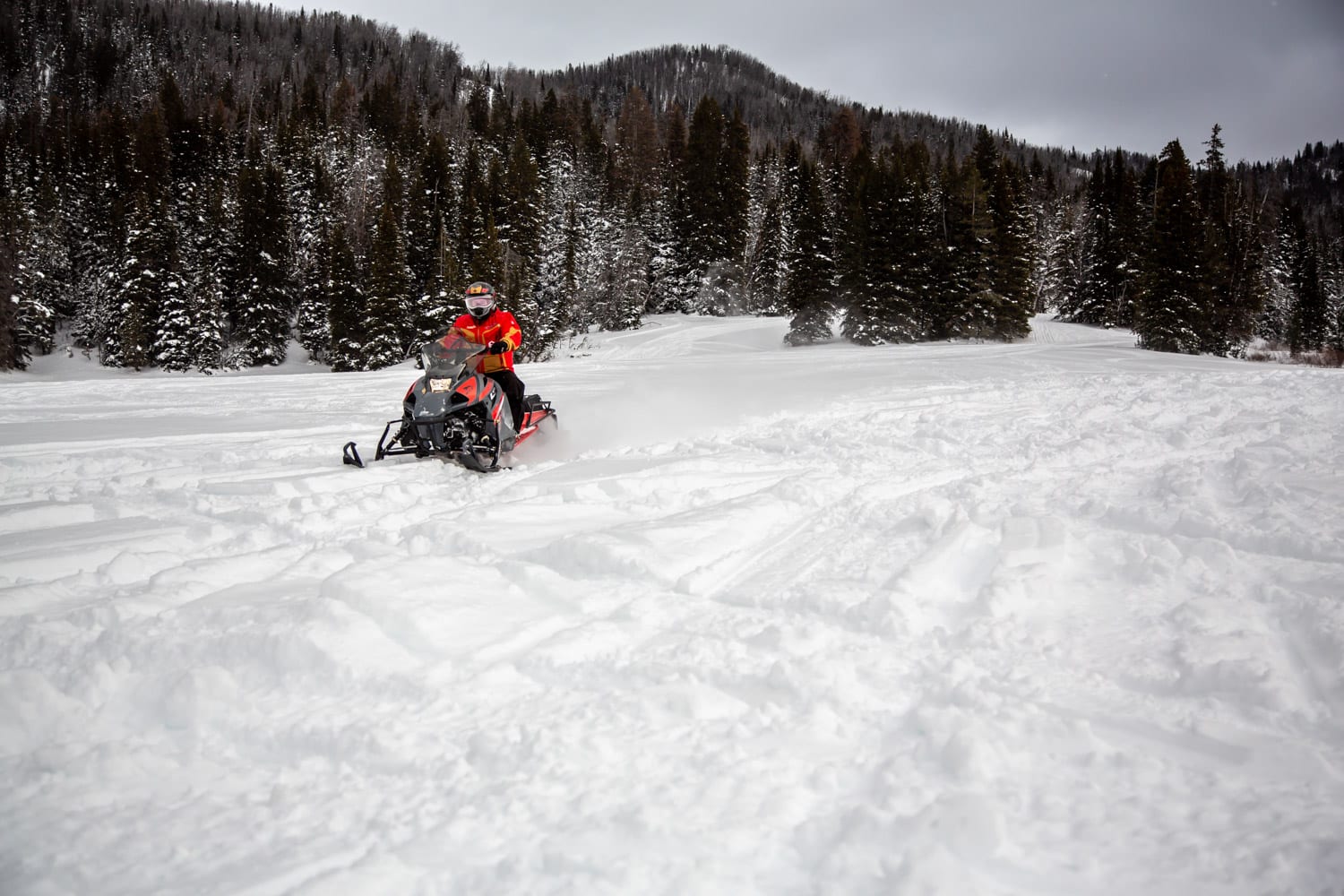
Blast M
We also thought of the mountain enthusiasts who are new to the sport with the Blast M. Here again, we find all the main attributes of the full-size M models: aggressive 146-inch Challenger track with 2-inch beads, Alpha One monorail rear suspension with 12 inches of travel and AMS mountain front suspension. Despite a limited 65 horsepower, it’s surprising how well the entry-level M handles powder, and you certainly won’t be tackling the steepest slopes to get to the top, but the car will allow you to have fun and learn about off-road riding.
Arctic Cat… Still running !
Even though many questions revolve around the American company, it continues to be in the race ! On August 20th, we were invited to the presentation of the Arctic Cat racing models for 2021 ! Brian Dick, director of production strategy, presented us via webconference three new models that will be available to racers as the next racing season approaches. Three segments are getting a new thoroughbred, Snowcross, Crosscountry and the mountain climbing races commonly known as Hillclimb.
R-SX Snowcross
Cheval de bataille des coureurs en snowcross pour la saison 2020-2021, le R-SX a subi quelques changements intéressants… La première chose qui nous frappe d’entrée de jeu est le retour à un système d’injection dans le corps d’admission (Throttle Body), la raison invoquée: l’amélioration de la réponse et la puissance à bas régime du 600 CC… La suspension arrière fait également partie des changements, le bras de suspension avant a été allongé de deux (2) pouces pour un meilleur contrôle du transfert de poids et de la manœuvrabilité. Les berceaux (rails) de suspension ont été révisés pour accueillir le nouveau bras. Pour terminer, on ajoute un nouveau garde-neige pour être conforme aux nouvelles normes de course.
R-XC Crosscountry
Crosscountry is also one of the three disciplines in the American manufacturer’s sights. The R-XC is very similar to a trail snowmobile with a few improvements. What’s new for 2021 is under the hood: very light engine mounts have been added and the TCL plate, which keeps the two pulleys perfectly aligned, is made of carbon fiber. To complete the changes, the small window indicating the oil level in the chain case has been replaced with a rod, a new filler cap with better sealing and a revised fuel line. R-XC is also powered by the 600 CC, but the semi-direct injection has been kept. Another interesting point is that the Crosscountry version is equipped with the ARS suspension at the front with the perforated pivot arms, they were very evasive about this decision, mentioning that they had obtained better results…
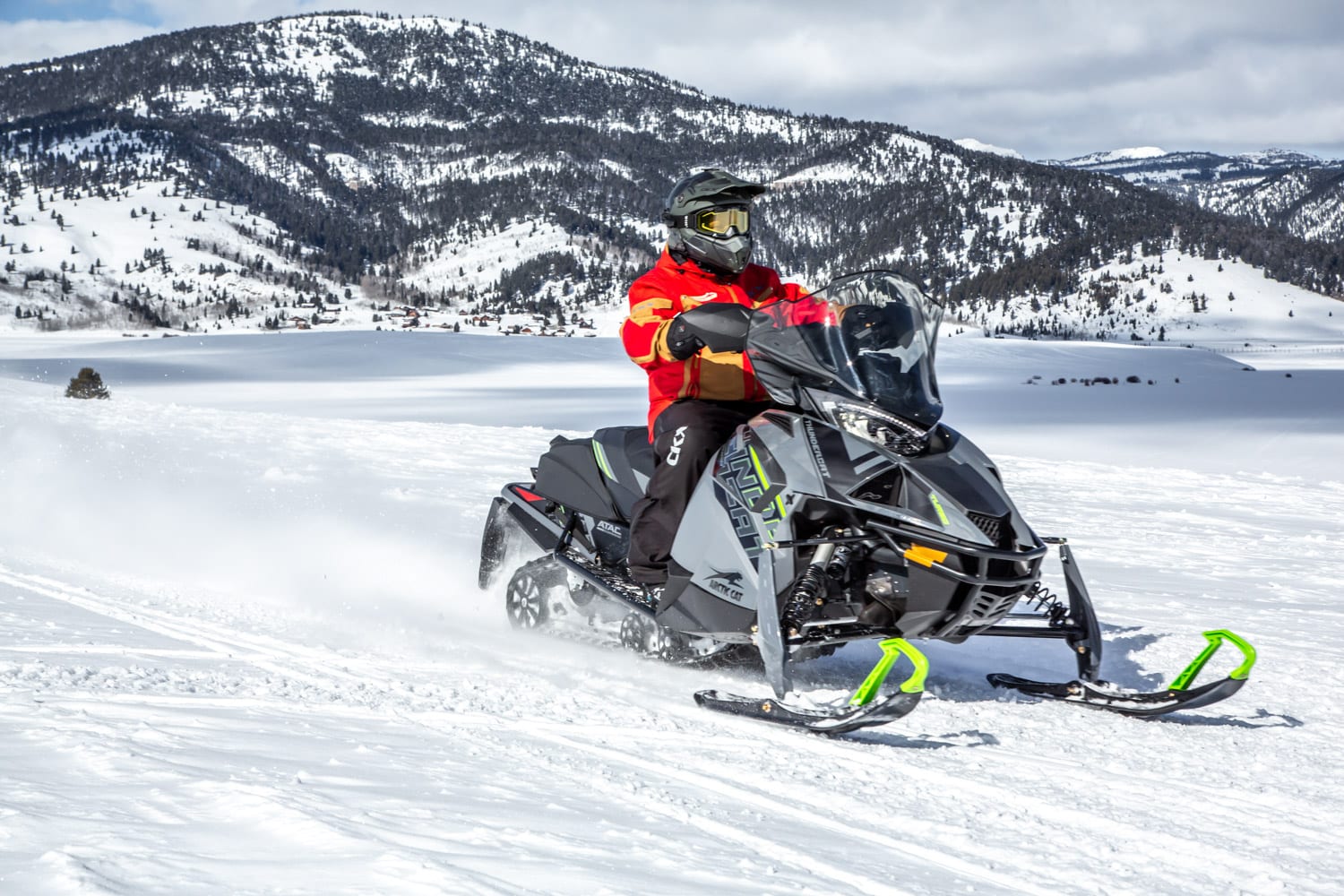
R M Mountain
The mountain beast gets the same additions as the Crosscountry version: lightweight engine mounts, carbon fiber TCL plate and improvements to the chain case and fuel intake line. Like its two siblings, several parts are lightened: Team driven pulley with a hollow driveshaft, a lighter ¾ pound composite steering column, and much more!

